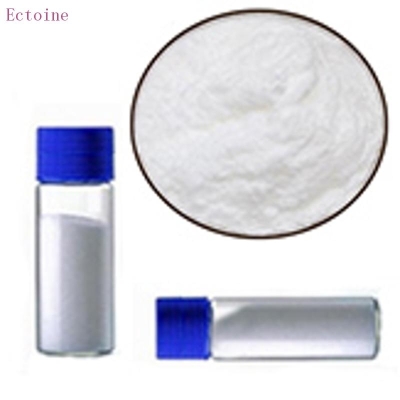A article to help you understand the main sweeteners on the market . . . 21FOOD online show strategy
-
Last Update: 2020-06-12
-
Source: Internet
-
Author: User
Search more information of high quality chemicals, good prices and reliable suppliers, visit
www.echemi.com
Sweeteners are food additives that give food a sweet tasteThere are many types of sweeteners, which can be divided into natural sweeteners and synthetic sweeteners according to their source, nutritional sweeteners and non-nutritional sweeteners according to their nutritional value, and sugar and non-sugar sweeteners according to their chemical structure and propertiesSweeteners can be divided into functional sweeteners and glycol sweetenersl Functional sweeteners Functional sweeteners have the characteristics of high sweetness and low thermal value, and are often referred to as high sweetsweetsweeters, non-nutritional or low-heat sweetenersMost functional sweeteners are not involved in the body's metabolic process and are suitable for use in obese people or people with diabetesFunctional sweeteners can be further divided into synthetic sweeteners and natural sweeteners. First, synthetic sweeteners synthetic sweeteners mainly include saccharin, sweetener, aspartame, Ansai honey, sucralose (also known as sucrose), new sweet, etc, completely synthesized by artificial, with high sweetness, high sweet price ratio characteristicsSynthetic sweeteners have a history of nearly 140 yearsIn 1879, the introduction of the first generation of synthetic sweeteners saccharin marked a new era of synthetic synthesis; in 1937, the second generation of synthetic sweeteners sweetener was discovered in the United States, industrial production began in the 1960s; and in 1965, the third generation of synthetic sweetener aspartame was accidentally discovered in synthetic drugs, in 1981, approved by the United States FDA for food use, 1983 Allowed to be used in the preparation of soft drinks; in 1967, the fourth generation of synthetic sweeteners Ansenecone was successfully developed; in 1976, sucralose was successfully discovered; in 1993, new sweets were introduced; to date, synthetic sweeteners have developed to the sixth generation, degrose, sweeteners have gradually withdrawn from the historical stage, aspartasweet, Ansee, saccharide, and newener are still active in the sweetener marketAt present, China's synthetic sweeteners output value of about 9 billion yuan, is the world's largest producer and exporter of synthetic sweeteners. 1Aspartame aspartame is a non-carbohydrate artificial sweetener, alias edistam, APM, Canderel, etcBecause aspartame sweet ness high and low, will not cause a significant increase in blood sugar, is a natural functional oligosaccharides, not tooth decay, pure sweetness, low moisture absorptionAspartame is not suitable for cooking, baking and hot drinks due to the loss of sweetness due to the high temperature that breaks downChina's regulations can be used for pastries, biscuits, bread, preparation of wine, ice cream, ice cream, ice sticks, beverages, candy, dosage according to normal production needs(Note: Please press the copy link to the browser to enter) (Exhibition strategy) Aspartame supplier 1, Changmao Biochemical Engineering Co., Ltd(booth: 3C184) booth entrance: Shijiazhuang Hong Xiang Food Technology Co., Ltd(booth: 4A121) booth entrance: 2 Ansemian Saemy, also known as AK sugar, chemically known as potassium acetyl sulfonate, was first synthesized by the German company Hirst in 1967, after 15 years of testing and inspection, in 1983 and 1998 the European Union and the United States respectively approved its use, the domestic also recognized in 1992 Ansemi is widely used in food, beverage, oral hygiene/ cosmetics and pharmaceuticals and other fields Ansemi is safe, stable, economical and easy to use, mainly as an alternative to saccharin and sweeten Ansai honey supplier 1, Shandong Benyue Biotech Co., Ltd (booth: 3C165) booth entrance: Shandong Yabang Chemical Technology Co., Ltd (booth: 3B149) booth entrance: 3 sucralose (also known as sucrose) sucrose, sucrose, is a new generation of sweetener, the appearance of white crystalline powder or particles, sweetness of about 600 times the sugar Sucralose is a new type of high-quality, non-nutritional high-efficiency sweetener with high safety and stable performance At present, sucralose has been approved for use in more than 120 countries and regions, widely used in food, beverage, health care products, daily chemical, medicine and other fields Sucralose Supplier 1, Shanghai Ruijin Industrial Co., Ltd (Booth: 3C181) Booth Entrance: Nantong Changhai Food Additives Co., Ltd (Booth: 3D215) Booth Entrance: 4 New Sweet New Sweet is a functional sweetener With pure sweetness, sweet harmony, very close to aspartame, no other strong sweeteners often with the bitter and metallic taste Sweetness is 7000 to 13,000 times sweeter than sucrose, and 30 to 60 times sweeter than Asba The energy value is almost zero and can be maintained at instantaneous high temperatures New sweet supplier Shenzhen Chenxin Flavors and Fragrances Co., Ltd (booth: 5A107) booth entrance: Second, natural sweeteners natural sweeteners are extracted from plants glycoside production, with high sweetness, high safety characteristics Mainly includes stevia glycosides, Rohan fruit stenosine, licorice stenost, soma sweet (bamboo taro stenomelicant), new orange peel dihydrocharketone, stevia, etc , the current application is more steviaglycosine and Rohan fruit stenosine. 1 Stevia glycoside stevia glycosides is a new natural sweetener from chrysanthemum herb stevia, sweetness is 250 to 450 times sucrose, international sweetener industry data show that stevia glycoside has been widely used in Asia, North America, South America and EU countries in the production of food, beverages, seasonings, China is the world's most important stevia glycoside Stevia Glycoside Supplier 1, Shandong ShengxiangYuan Biotech Co., Ltd (booth: 2B147) Booth Entrance: Zhejiang Tiangrass Biotech Co., Ltd (Booth: 2A110) Booth Entrance: Jiangsu Kolexin Biological Co., Ltd (Booth: 3C177) Booth Entrance: 2 Rohan Go sweet sidelochian Fruit sweet sidenin is the sweet ingredient of Rohan fruit, high plant content and good water solubility, has a purity of more than 98% of the finished product used as a food additive, its sweetness is 300 times sucrose, zero calories, with a clear heat run lung cough, intestinal treatment effect, obesity, constipation, diabetes and other preventive effect In the national standard "GB2760 food additives use standards" stipulates that The Luohan fruit sweetside can be used in an unlimited number of all kinds of food Luohan Fructose Supplier 1, Hunan Huacheng Biological Resources Co., Ltd (booth: 4A116) booth entrance: Hunan Fructose Food Technology Co., Ltd (booth: 4A105) booth entrance: 3 licorice (ammonium licorice) licorice is the most important active ingredient in licorice, licorice is the most important active ingredient in licorice powder, sweet taste, sweet for succane sugar 200 to 20 times Liquor beet 1, Shanghai McFubiological Products Co., Ltd (booth: 3C172) booth entrance: Xi'an Ester Biotech Co., Ltd (booth: 2B161) booth entrance: 4 New methyl orange peel dihydroxetrigone (NHDC) is derived from the natural citrus ingredient grapene or ocoside bioconversion or chemical conversion of high-efficiency, low-efficiency, low-efficiency, low-efficiency Its high sweetness (1500-1800 times the sweetness of sucrose), refreshing taste, long-lasting aftertaste, excellent shielding bitter effect, do not participate in human metabolism, so its thermal energy value is very small (8.36J/g), can be used as a low-energy food sweetener New methyl orange peel dihydrocharcoone supplier 1, Yanyuan Kangyu Biotech Co., Ltd (booth: 3D240) booth entrance: Guangdong Jinjunkang Biotechnology Co., Ltd (booth: 3C196) booth entrance: 5 sweet tea Glyncosides is a natural and efficient sweetener, its sweetness is 300 times sucrose, 1% of the calories of sucrose, close to sucrose fresh sweetness, safe to eat, non-toxic side effects, with blood lipids and blood sugar effects, is the ideal sweet substitute Especially suitable for diabetes, hypertension, obesity, hyperlipidemia and other patients, as well as not suitable for sugar people, widely used in food, health care products and other natural non-sugar sweeteners market Sweet tea sideside supplier Wuxi Century Bioengineering Co., Ltd (booth: 1C166) booth entrance: Third, glycol sweetener glycol synthetic sweeteners with low sweetness, low calories, nutrition, high safety, good taste, do not trigger tooth decay, does not affect blood sugar value and so on Mainly include: xylitol, sorbitol, maltose alcohol, glycolyl alcohol, lactose alcohol, issomaltoster, erythemaol and so on At present, the more applied glycol sweetener is xylitol, erythritol, sorbitol, maltose alcohol. 1 Erythricool is a functional sugar alcohol developed and marketed by Japanese manufacturers in the late 1990s, its taste and sweetness is very close to white sugar, sweetness is about 60%-70% of white sugar, pure taste, no post-pain, but the heat is only 1/10 of white sugar Erythrimia alcohol is not degraded by enzymes, can only be discharged from the blood from the blood to urine through the kidneys, do not participate in sugar metabolism and blood sugar changes, can prevent tooth decay, suitable for diabetic patients, will not cause gastrointestinal discomfort like xylitol The low moisture absorption of erythritol can inhibit microbial growth and increase the shelf life of the product, which has a better structural tightness and softness than the products that also use sucrose as raw material, and is more suitable for chocolate, confectionery and baked goods "Exhibition strategy" chirlycose supplier 1, bowling treasure biological Co., Ltd (booth: 4A101) booth entrance: Guangzhou Kaiwen Food Development Co., Ltd (booth: 3D260) booth entrance: 2 xylitol xylitol is native to Finland, is a natural sweetener extracted from plant raw materials such as birch trees, oak trees, corn kernels, sugar cane sugar cane Xylitol sweetness and sucrose, soluble in water can absorb a large amount of heat, is the largest heat absorption value of all glycol sweeteners, so in the form of solids, will produce a pleasant cool feeling in the mouth Xylitol is not molygly and has anti-tooth decay effect Metabolism is not regulated by insulin, metabolized completely in the human body, the thermal value is 16.72kJ/g, can be used as a hot energy for diabetics ,exhibition strategy) xylitol supplier 1, Shandong Longli Biotech Co., Ltd (booth: 1A108) booth entrance: Shandong Futian Pharmaceutical Co., Ltd (booth: 3A101) booth entrance: Anyang City, Anyang City Yuxin xylitol Technology Co , Ltd (booth: 3A119) booth entrance: 3 sorbitol sorbithas has a cool sweet, sweetness of about half of sucrose, hot value and sucrose similar, with good moisturizing performance, can keep the food a certain amount of moisture, can maintain a balance of sweet, sour, bitter strength, enhance the flavor of food Since it is a non-volatile polyol, it also has the function of maintaining the aroma of food And in the human body does not convert to glucose, not controlled by insulin, suitable for diabetics It is used mainly as a sweetener in baked goods and cereals "Exhibition strategy" Sapentine alcohol supplier 1, Zhejiang Huakang Pharmaceutical Co., Ltd (booth: 3A104) booth entrance: Qingdao Mingyue Seaweed Group Co., Ltd (booth: 3A103) booth entrance: Shandong Shangyu Biotech Co., Ltd (booth: 3A1 25) Booth entrance: 4 isofasteric glycol iswhatalketone sugar sweetness is about 42% of sucrose, sweet ness is pure, with sucrose basically the same, no bad aftertaste, easy to dissolve in water, in the intestine can be enzyme-solved, absorbed and utilized by the body The effect on blood sugar values is not great, there is no tooth decay Exhibition: Isis maltoster glycol supplier Qingdao Hanikang Biotech Co., Ltd (booth: 3D271) booth entrance:
This article is an English version of an article which is originally in the Chinese language on echemi.com and is provided for information purposes only.
This website makes no representation or warranty of any kind, either expressed or implied, as to the accuracy, completeness ownership or reliability of
the article or any translations thereof. If you have any concerns or complaints relating to the article, please send an email, providing a detailed
description of the concern or complaint, to
service@echemi.com. A staff member will contact you within 5 working days. Once verified, infringing content
will be removed immediately.







